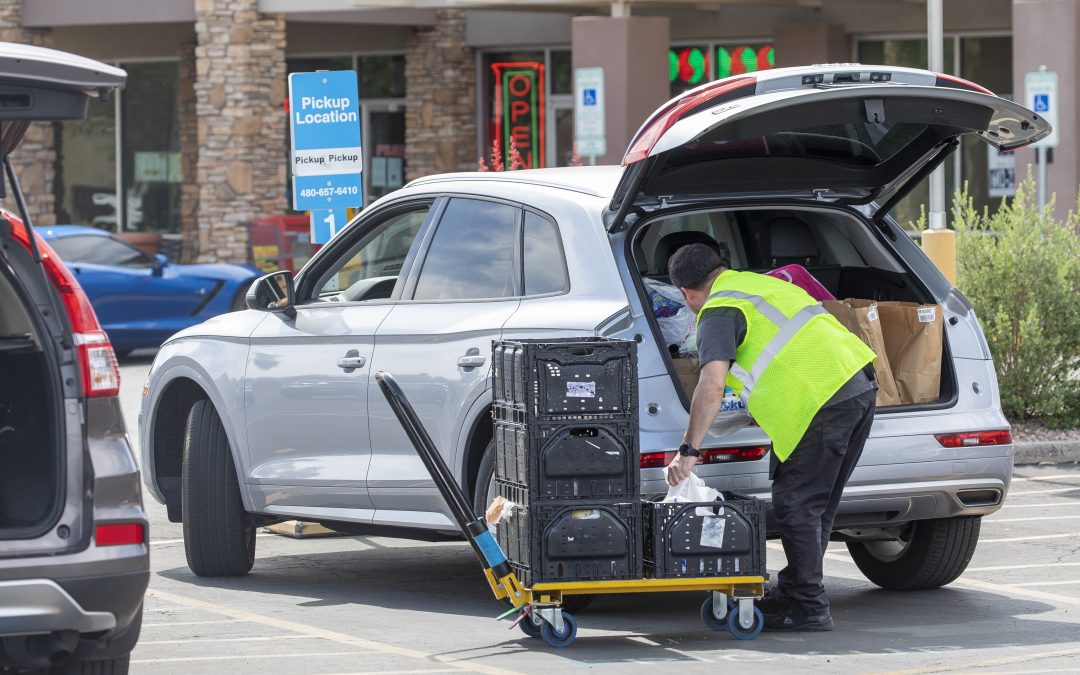Like restaurants, grocers are struggling to find a happy medium with third-party delivery providers as more of the North American grocery market moves online. While grocery stores encourage more profitable native ordering and customer pickup, new entrants are testing radically different models while Uber and DoorDash challenge Instacart’s established slice of the pie.

David Bishop – Brick Meets Click
COVID-19 forced many grocers online for the first time, and many took the easiest route, which was signing a contract with Instacart, said David Bishop, a partner at Brick Meets Click, a research firm specializing in the online grocery business. That made the branded digital marketplace the de facto business model for digital grocery sales, but that model may not be sustainable.
Groceries are not a high-margin business, and grocers cannot afford to bear the costs of assembling and delivering orders on their own. A recent survey of 206 grocers by Wynshop found that 86 percent were dissatisfied with their online profitability, and 59 percent said their third-party delivery partnerships were unprofitable.
While digital sales, particularly delivery, are crushing grocer’s margins, opting out is not an option, said Bishop. According to Brick Meets Click’s State of the U.S. eGrocery Market Report, digital sales topped $8.6 billion in August, and he said that digital sales now account for roughly 10 percent of the U.S. market.
Digital sales may be unavoidable, but there is no shortage of alternatives to the branded digital marketplace. Retailers such as Costco have debuted their own ecommerce platforms, even as their products are still sold on Instacart. The grocer is undercutting Instacart to encourage users to place digital sales directly through the Costco website, said Bishop. According to Brick Meets Click’s analysis, the average markup for goods sold on Costco’s ecommerce site is “16 to 17 percent,” while the average markup for Costco products on Instacart is “roughly 24 percent.”
Diversified delivery companies Uber and DoorDash are challenging Instacart’s branded marketplace with their white label delivery services, which allow grocers to retain control of the customer relationship while still using third-party drivers to fulfill delivery orders.
True to form, Uber and DoorDash are being aggressive. Bishop said there have been several instances of Uber or DoorDash enticing grocers to break their contracts with Instacart by offering to pay their early severance penalties.
A possible sign of things to come, Instacart is also getting in on the white label game. Orders placed on Costco’s ecommerce platform are delivered by Instacart drivers.
According to Bishop, the path to sustainable digital sales for grocers is in increasing pickup’s share of the digital pie. By convincing customers to drive to the store, grocers can cut the delivery companies out of the equation, and can strengthen their relationship with their customers through face-to-face interaction, said Bishop.
But pickup is not a silver bullet. Grocers are still responsible for assembling the order, a labor-intensive process made worse by the layout of the stores, which are designed to encourage browsing, not efficient shopping. To increase labor productivity, many grocers are turning to software such as the kind developed by Wynshop. Charlie Kaplan, chief revenue officer of Wynshop, said the company’s software can, using a map of the store, chart the most efficient route for an order picker, and help them assemble multiple orders at once.
While pickup offers better margins, Bishop doesn’t believe grocers will be able to eliminate delivery. “[It’s] a cost of doing business,” he said.
Bishop cited Picnic, a Dutch grocery delivery company, as an example of a grocer getting digital sales right. While American delivery companies follow an on-demand “taxi cab” model, he said Picnic employs a “bus route” model, with semi-regular delivery along a pre-set route. According to Bishop, the company’s advantages lie in decreased window time, a result of the company making multiple deliveries in a single trip, and its use of dedicated multi-temperature trucks, which allow customers to order goods such as ice cream, meat or milk without worrying that they’ll spoil on the journey.


